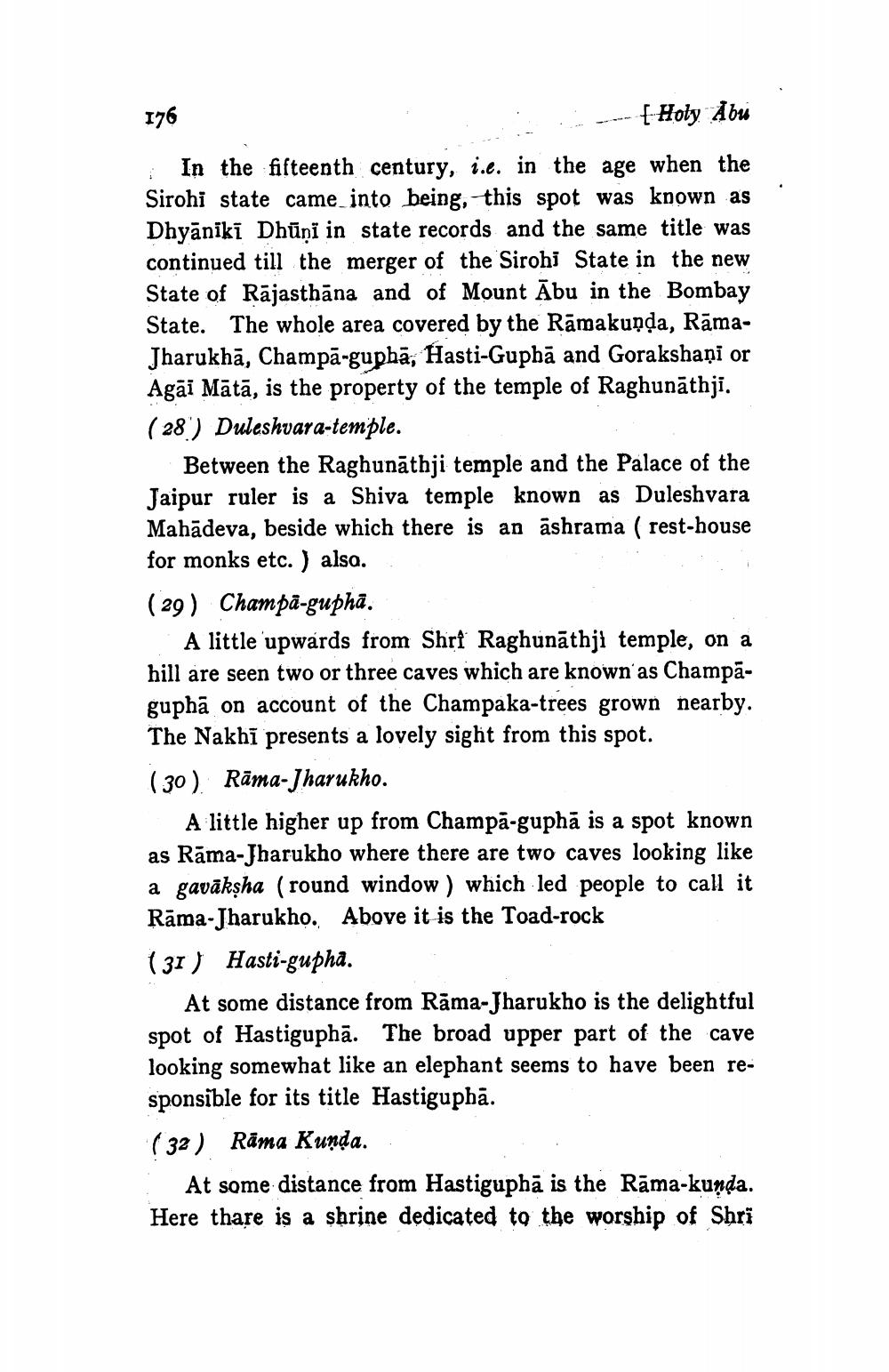________________
176
-- [ Holy Abu In the fifteenth century, i.e. in the age when the Sirohi state came into being, this spot was known as Dhyānikī Dhūņi in state records and the same title was continued till the merger of the Sirohi State in the new State of Rājasthāna and of Mount Ābu in the Bombay State. The whole area covered by the Rāmakunda, RāmaJharukhā, Champā-guphā, Hasti-Guphā and Gorakshani or Agāi Mātā, is the property of the temple of Raghunāthji. ( 28') Duleshvara-temple.
Between the Raghunathji temple and the Palace of the Jaipur ruler is a Shiva temple known as Duleshvara Mahādeva, beside which there is an ashrama ( rest-house for monks etc. ) also.. (29) Champā-gupha.
A little 'upwards from Shri Raghunāthji temple, on a hill are seen two or three caves which are known as Champāguphā on account of the Champaka-trees grown nearby. The Nakhī presents a lovely sight from this spot. ( 30). Rāma-Jharukho.
A little higher up from Champā-guphā is a spot known as Rāma-Jharukho where there are two caves looking like a gavāksha (round window) which led people to call it Rāma-Jharukho. Above it is the Toad-rock (31) Hasti-gupha.
At some distance from Rāma-Jharukho is the delightful spot of Hastiguphā. The broad upper part of the cave looking somewhat like an elephant seems to have been responsible for its title Hastiguphā. ( 32 ) Rāma Kunda.
At some distance from Hastiguphā is the Rāma-kunda. Here thare is a shrine dedicated to the worship of Shri




